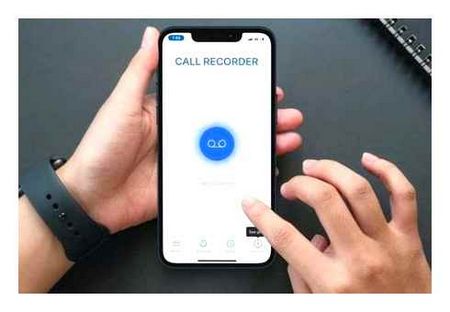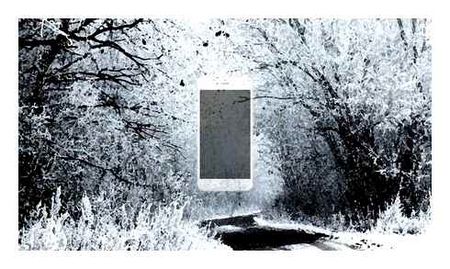Why does iPhone hang up in the cold?
iPhone shuts down in the cold: why does this happen?
With the onset of frosty weather, the number of complaints from users about the malfunction of iPhone smartphones has increased. According to users, in sub-zero temperatures, mobile devices are discharging much faster than usual, or they switch off unexpectedly. Why so?
The main reason for iPhone turning off in freezing temperatures is the lithium-ion batteries that Apple uses in its equipment. Exposure to sub-zero temperatures causes the capacity of built-in batteries to decrease due to increased internal resistance. It is not uncommon for such processes to occur at 5 degrees.

Due to a decrease in battery capacity the iPhone shuts down. At the same time its battery retains some energy. Exposure to sub-zero temperatures temporarily changes the characteristics of the batteries: they no longer deliver the necessary amount of current, and the iPhone shuts down.
The most problematic iPhones
Operation of modern lithium-ion batteries depends on the chemical components from which the batteries are made. The functionality of the latter decreases as the number of charge/discharge cycles increases. The standard indicator of the iPhone is 800-900. It means that with active use of the device its battery stops working properly 2-2.5 years after purchase.
From the above it can be concluded that iPhone functionality problems in freezing temperatures are more often experienced by owners of older smartphones. There are several programs that can be used to find out the number of remaining discharge/recharge cycles. Proper use of the device allows you to prolong its lifetime.
Why owners of other smartphones do not face this problem?
In addition to the characteristics of lithium-ion batteries, other factors affect the performance of smartphones at low temperatures:

The iPhone case is made of aluminum, which has a high thermal conductivity. Due to the fact that Apple uses this material, the smartphone quickly freezes. The same contributes to the glass installed on the iPhone 4 and 4S models, which are still actively exploited by people in Russia.
Aluminum has a thermal conductivity index of 220 W/(mk), while plastic, which Samsung used on many models of the Galaxy S, it is 0.15-0.2 W/(mk). Through the active use of the latter material in the construction of smartphones, the latter are well tolerated the effects of negative temperatures. Galaxy S up to the sixth version keeps working with.At 35 degrees Celsius.
In addition to these reasons for the rapid iPhone shutdown, the thickness of the body contributes to it. Most Apple devices are characterized by a thin design, which causes the built-in batteries to fail faster.
iPhone shuts down in the cold: why and what to do?
Formally, the winter lasts only 3 months, but in fact even in the middle belt of Russia it can stay for a month or two. With the onset of winter problems arise, and they often appear, as it may seem, out of nowhere. For example, your favorite iPhone simply shuts down in the cold. Why it happens, what to do and what other bad things you can expect? Read about all this in our article.
What models of iPhone suffer most from the cold?
Why is it that one iPhone will continue to run smoothly even in freezing temperatures with 50% of the charge, while the other will shut down at a slight drop in temperature with 80% of the charge? The fact that lithium-ion batteries have a limited number of operating cycles.
When they get over this value, their capacity decreases significantly. The average iPhone has a low number of cycles (800-900). So if you use a smartphone quite actively, then an unpleasant problem may appear as early as two years after the purchase of the gadget.
From this we can conclude that older models of Apple devices suffer the most.
Rules for use in freezing temperatures
The temperature outside is below freezing, but you need to go, and you can’t leave your iPhone at home. What to do to save your device from the cold? A few rules:
- Keep your phone closer to your body. Forget the outer s for a while and use the inner s. they keep the temperature within comfortable limits for the equipment.
- Protect your iPhone with a case. No need to look for a furry case or hide your phone in a mitten (although that helps, too). For minimal protection from frost is enough to pack your smartphone in any thick case. If you are ready to splurge and buy a case with battery, it will be very cool. iPhone will survive the cold easier as it will be constantly connected to a power source. The main thing is not to charge it in the cold only in your inside !
- Don’t leave your phone in the car. The temperature inside the cabin will drop and your iPhone will freeze so much that you’ll get tired of warming it up.
- Run demanding apps to warm up the processor. It can help to make a phone call in freezing temperatures. But often it is not necessary to do so. temperature changes badly influence the condition of the battery.
Top tip: avoid using your iPhone outdoors in the winter. If you need to make a call, go indoors. Or buy a headset and operate the device without taking it out of your inside. fur pouch, or other warm place for a long time. This greatly annoys Apple users and is a powerful argument for the transition to Android-smartphones, but it should be understood that in the cold any electronics operates with errors. It’s just that for iPhones these errors occur at relatively high for our latitudes temperatures.
In the cold, the iPhone quickly runs out of power and shuts down, why and what to do?
Hello all! In the cold season owners of gadgets from many companies (and Apple is no exception), can expect unpleasant surprises. The thing is that being out in the cold, the iPhone can lose power very quickly and shut down almost immediately. over, looking ahead we want to note that in most cases it will be. Is this situation normal?? Why it happens? Is it worth running to change the battery or “there is something worse broken”?? Let’s find out now, here we go!
iPhone Settings You Should Change Right Away
But first, personal experience. With iPhone 4 and 4S I have not had any problems, but the later models, starting from the 5th behave inadequately in the cold. This may be due to the housing materials (aluminum), possibly due to the reduced thickness of the device, but the fact is and it can not be denied, the latest iPhone models are very sensitive to low temperatures. In winter you go out with only 60% of charge, want to listen to some music on or take a picture of something, and practically at once the phone just shuts down and the battery is empty.
Perhaps that’s why on the Apple site there is a whole section devoted to this malaise. Let’s turn to it and find out that the iPhone is equipped with a lithium-ion battery, which has both advantages and disadvantages.
To one of these disadvantages can be attributed a working temperature range of 0 to 35 degrees Celsius. This is what Apple calls the “room temperature” and the optimal temperature when using the iPhone, iPad and iWatch.
Of course, you can’t take these values as a last resort. Errors exist even if it’s just above zero outside, the iPhone can still run out of power quickly. This is normal and there is nothing wrong!
By the way, the company itself does not prohibit the use of the device at low temperatures, but notes a possible reduction in battery life.
And then he says that when the temperature returns to normal and the battery returns to its normal performance.
So there is no need to worry about damaging your iPhone in the cold. Much scarier is overheating, but even there not all so unambiguous.
And although it is almost impossible to avoid the rapid discharge of the iPhone in the cold, there are still a few things that at least a little, but can help in this situation:
- It is necessary to use a case (preferably the most insulated:)).
- Carry a portable charger. The point is that it takes a lot of energy to turn on, and in the cold it’s already gone. So the portable charger can help you power up your phone.
- Carry the iPhone in your inside jacket (closer to heat and body).
As a result: a rapid depletion of battery power, and then turn off the iPhone in the cold:
But it is always necessary and useful to prepare for the use of a smartphone in the cold. Except, however:
You can’t think of anything else in “preparation”, not sewing a fur coat on it, after all? That seems a bit excessive to me, even for an expensive device like the iPhone. You can do without a fur coat!:)
But it is possible to observe that the iPhone disconnects at subzero temperatures. The answer to this question has to do with the battery. Ion power has already dropped and does not support the peak performance of the device. At this point, the smart algorithms come into play, which redistribute energy. In this case, the smartphone is slower. For example, the user will notice a slow start of applications, camera and other. This is a normal phenomenon for iPhones in freezing temperatures. There is a recommended temperature range for the smartphone to function well, from 16 to 20 degrees. Such conditions are difficult to withstand. Usually people use iPhones at various temperatures. But not in all conditions, the gadget will work as usual.
If you don’t want your device to shut down at the most inopportune moment in the cold season, then adhere to the following recommendations:
- Charge your iPhone to 100% before going outdoors. The more you have, the longer the battery will last in extreme temperatures.
- Wear your iPhone in its inside s, not outside, so it stays warm and you don’t have to worry about it turning off by itself.
- Wear your iPhone in a case. this will reduce the rate at which your smartphone cools down in bad weather. Leather sleeve cases or other cases that will cover as much of the iPhone’s surface area as possible are the best bet.
- Use headphones or any other headset. If you need to make or receive calls use the Airpods (or EarPods). This way you’ll keep your phone always warm and it won’t shut down.
- Before you go out in the cold warm up your iPhone with some heavy game or app. By the way, in order to understand what else can warm up your smartphone, read the article. why does the iPhone heats up??
The reason why the iPhone shuts down in the cold is a fairly weak battery. This manufacturer installs in phones the type of battery Li-Pol (lithium-ion type), and they lose the ability to give a full working flow of currents when the temperature drops. The electrolyte in these batteries is polymers with a gel type of filler. The polymer cools, its capacity changes, the resistance of the material itself increases.
The battery capacity decreases, it self-discharges, and the iPhone shuts down in freezing temperatures. The battery in the iPhone is the weak point, which fails more often and faster than other parts of the smartphone. If we talk about what batteries work best in the cold, then these are the batteries of models 6 iPhone and so on.